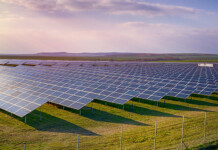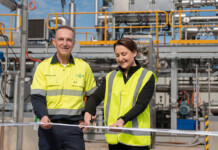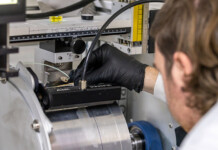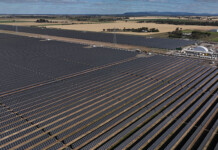By Phil Kreveld
In the words of the late, great Julius Sumner Miller, an eminent American physicist, brilliant at popularising science, when leading into some topic in science he would commence with his characteristic “why is it so?” Let’s put these hypothetical questions to the historical figures, Thomas Alva Edison, Nikola Tesla and Charles Prometheus Steinmetz.
Edison would answer, “I have a dynamo and I therefore string a set of wires to my customers who want electric lighting so direct current is the solution.”
Tesla’s answer would be, “That’s all well and good for low voltage DC lighting but if you want to send electricity any distance at all you need alternating current—and you have the advantage of my induction motors to run stuff.”
Steinmetz would nod his head and say, “Nikola is on the ball—I, as the father of alternating current theory, much more fun than DC, know we can build transformers and high voltage transmission to send electrical energy great distances, and create new industries—and in due course everyone will have AC piped to their homes.”
Today we can marvel at huge switchyards with massive circuit breakers and transformers, complain about unsightly transmission towers in what was once bucolic landscape, worry about some or other specimen of bird life getting a whack from a wind generator blade—and grouch along with neighbours that in spite of our rooftop solar we are being whacked by high electricity bills.
Related article: The distribution network of the future: a gigantic uninterruptible power supply?
Why is it so?
If we look around our home with lots of black and white little bugs plugged into every available socket turning AC into DC, our home entertainment running off AC to DC power supplies, the aircon running off inverters turning AC into DC and back again into AC, the LEDs, etc—and our solar inverters converting DC into AC, shouldn’t we ask again, ‘why is it so?’
There are DC micro grids and HV uni- and bipolar DC transmission is often a vital link between two AC energy zones. However, going over ‘holus bolus’ from AC to DC distribution is a bridge too far—for now.
The only concession in distribution, these days, is that power flow is permitted to vary, but one-way flow only, from substation to consumers.
On the one hand individual households and enterprises are investing in solar while distribution networks are resorting to ‘shaking off’ (an anodyne term for disconnection) inverters or some forms of control to provide a dynamic operating envelope, preventing reverse power flow so as to maintain voltage and voltage angle stability.
In a parallel universe, large scale solar and wind projects continue to be approved—in remote zones, and therefore requiring long transmission lines.
Why is it so?
Historically, plentiful energy sources made for nearby generation, therefore necessitating transmission to distant energy consumption centres. But now we have cheap energy sources in very close proximity to electrical loads—within metres of one another! The mantra, ‘no transition without transmission’ requires questioning but it invites no curiosity—‘why is it so’!
The complications arise when these various distributed energy resources of electricity are interconnected and particularly in an AC network because of the added voltage angle and frequency aspects. Presently DER utilise voltage-controlled oscillator comparators (a phase locked loop) to ensure all solar inverters (virtually 100% of DER) provide electric current in a fixed phase angle relationship to the voltage supplied by the network! At zero degrees, inverters provide only real power, and at other than zero degrees, both real and reactive power. Off grid, some inverters utilise an internal oscillator in order to supply AC power to a local load, but it is then not connected to the network (the inverter-consumption load is ‘islanded’).
Thus, for the foreseeable future a large degree of independence from transmission, should that be the aim, would require that (a) we specify which parts of a distribution network (micro grid) if not a complete zone, and (b) apart from having sufficient energy storage for the islanded section, be it a microgrid or entire zone, that it is able to recover from a massive failure—and to reconnect to main high voltage transmission.
Although not put in these technical terms, Clare Savage, head of the Australian Energy Regulator, noted at the recent Australian Clean Energy Summit that utilisation of distribution network energy independence would require significant capex equalling that required in transmission.
A false sense of security has built up where the aggregate growth in DER is taken as all that is required in order to ‘participate’ in the nation’s electricity supply. As mentioned, DER is grid-voltage following, or put differently is ‘current’ generating as opposed to ‘voltage generating’, or often termed voltage forming. Independence, irrespective of the diurnal period, requires that a stable voltage and frequency be available, supplied by a battery storage system of sufficient size and a voltage forming inverter.
Or, in the absence of a single unit of requisite size, a number of units with power-sharing between them would be necessary. Isochronous operation for a small network would have to be replaced by droop control, which for largely resistive network would be frequency-reactive power, and voltage-power based.
We are, however, not out of the woods: a redesign of large parts of a distribution network would be necessary. Voltage control becomes more challenging and costly. The inset explains the situation of transformers in reverse power flow, with magnetising current in reverse power flow and leading reverse current, driving the transformer core towards saturation, increasing hysteresis loss as well eddy current loss, and increased low order harmonics.
A great deal depends on at which point upstream, reverse power is absorbed because if it is allowed to pass on to main MV transformers and tap changers, voltage control becomes even more of a challenge, as tap changers run out of control range. Ultimately, we could allow power to pass through to the sub-transmission side, placing storage and voltage forming IBR there. That would add an order of magnitude in grid redesign not only involving distribution transformers, line drop compensation, tap changers, substation redesign, protection relays, etc. but also reconductoring.
More likely would be a redesign permitting minimum power flow on MV feeders and storage plus voltage forming at MV load buses. So called ‘community’ batteries are a step in that direction but their inverters would have to be voltage forming were the network to be cast loose from transmission.


We are limited in solutions by the great diversity in DER inverters. For example, if a uniform product were available with a form of frequency-dependent droop control (see inset), the use of smart transformers, would allow the grid to operate independently with stable voltage and power although while islanded, frequency would operate within a wider control band than in transmission connected operation. This amounts to squeezing the genie back into the bottle—and is therefore an unrealistic scenario.
Related article: It’s system strength, stupid!
Why is it so?
It appears the answer lies in part with obstinacy on the part of distribution networks to do anything that would allow more energy-efficient use of DER. Presently, and in the foreseeable future the only thing networks are prepared to do is limit power export from rooftop solar, and take care of voltage control without adding complexity to the task. Another part of the transition journey is the self-serving increase of transmission projects.
That said, the most important reason is the national failure to view the electricity system—as a SYSTEM, requiring careful analysis of the interlocking parts, and flowing from there a careful delineation of engineering specs for all the parts including location of REZ and maximum generation capacities, and an active role for distribution networks.







